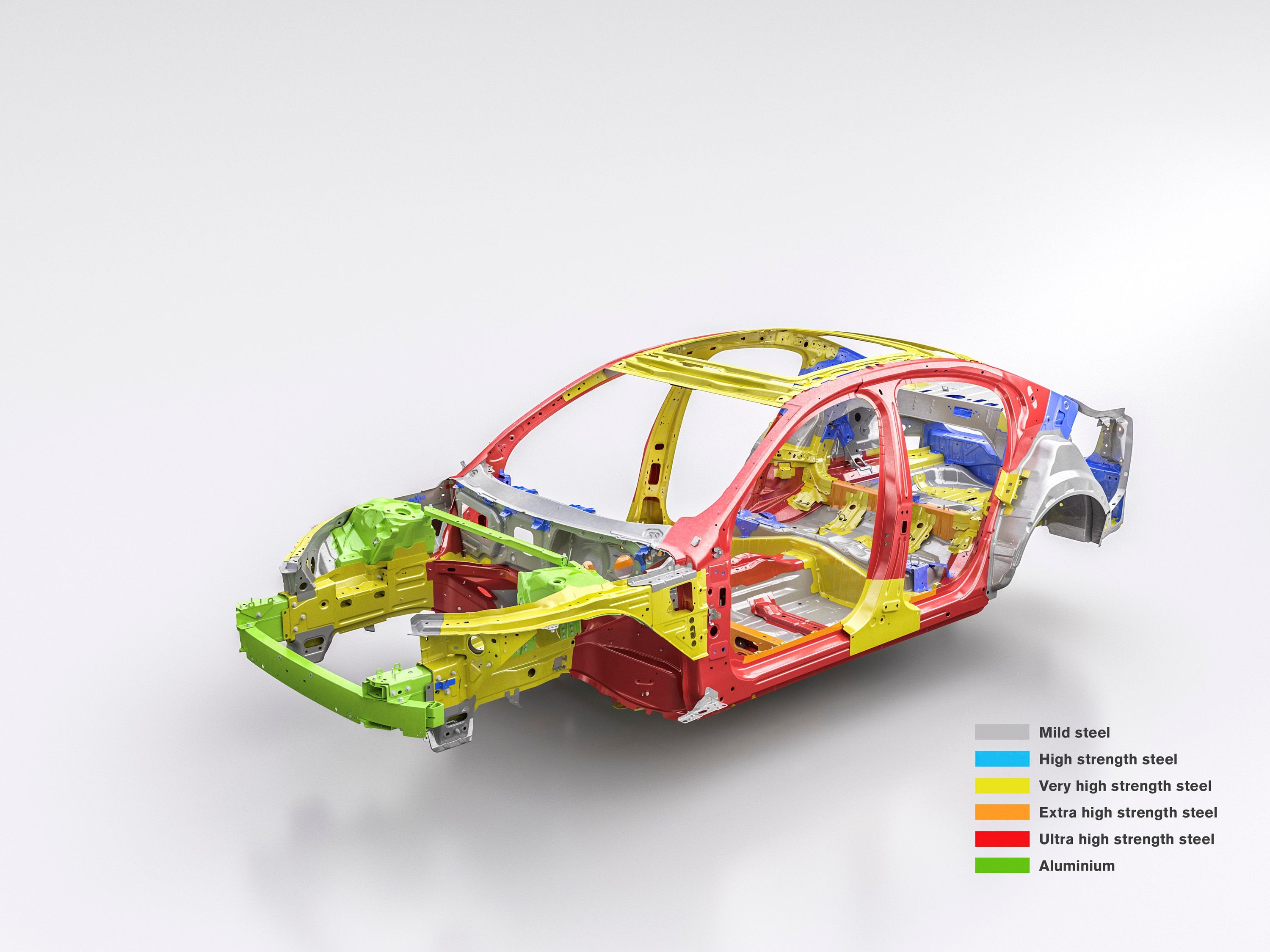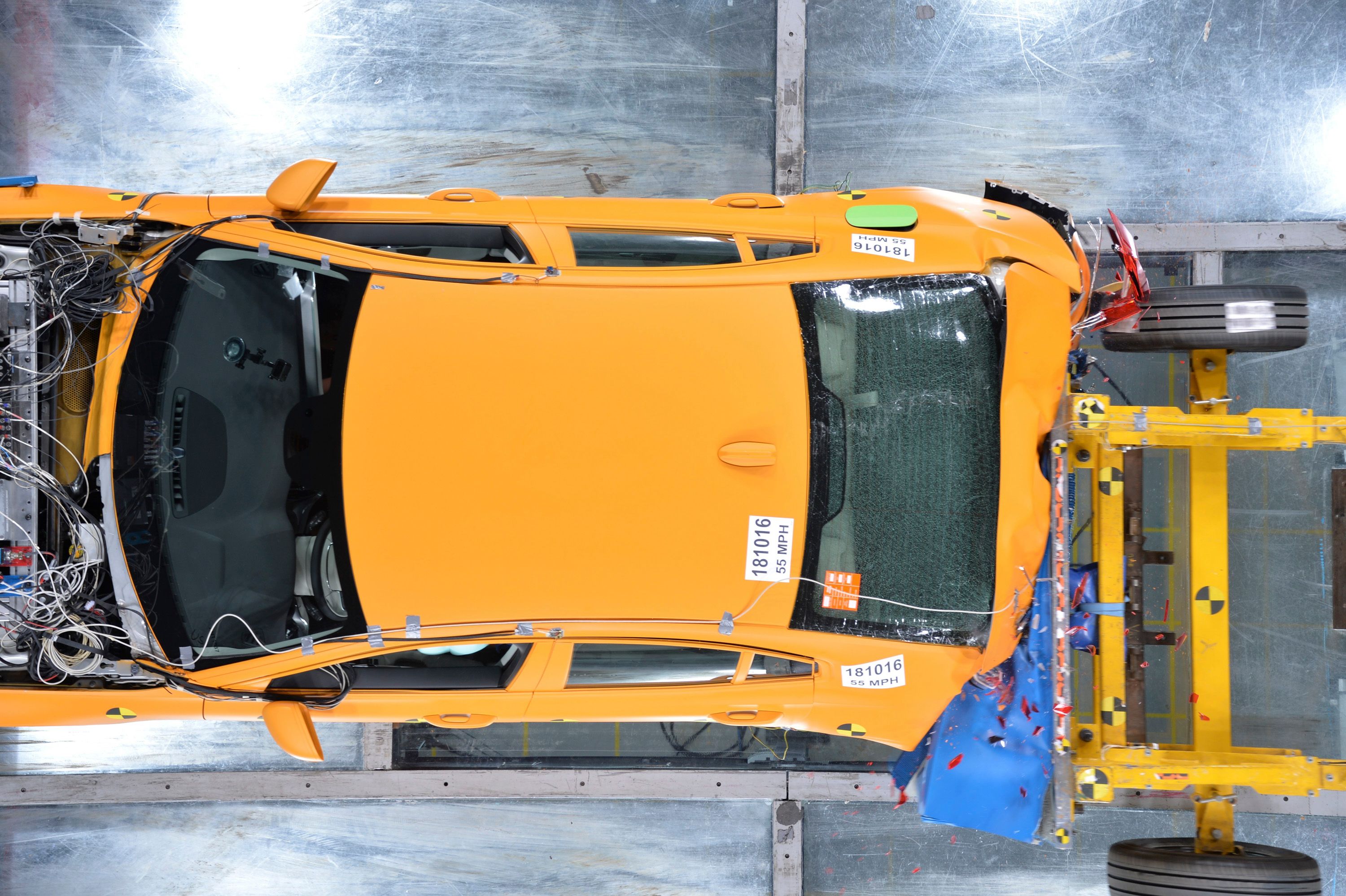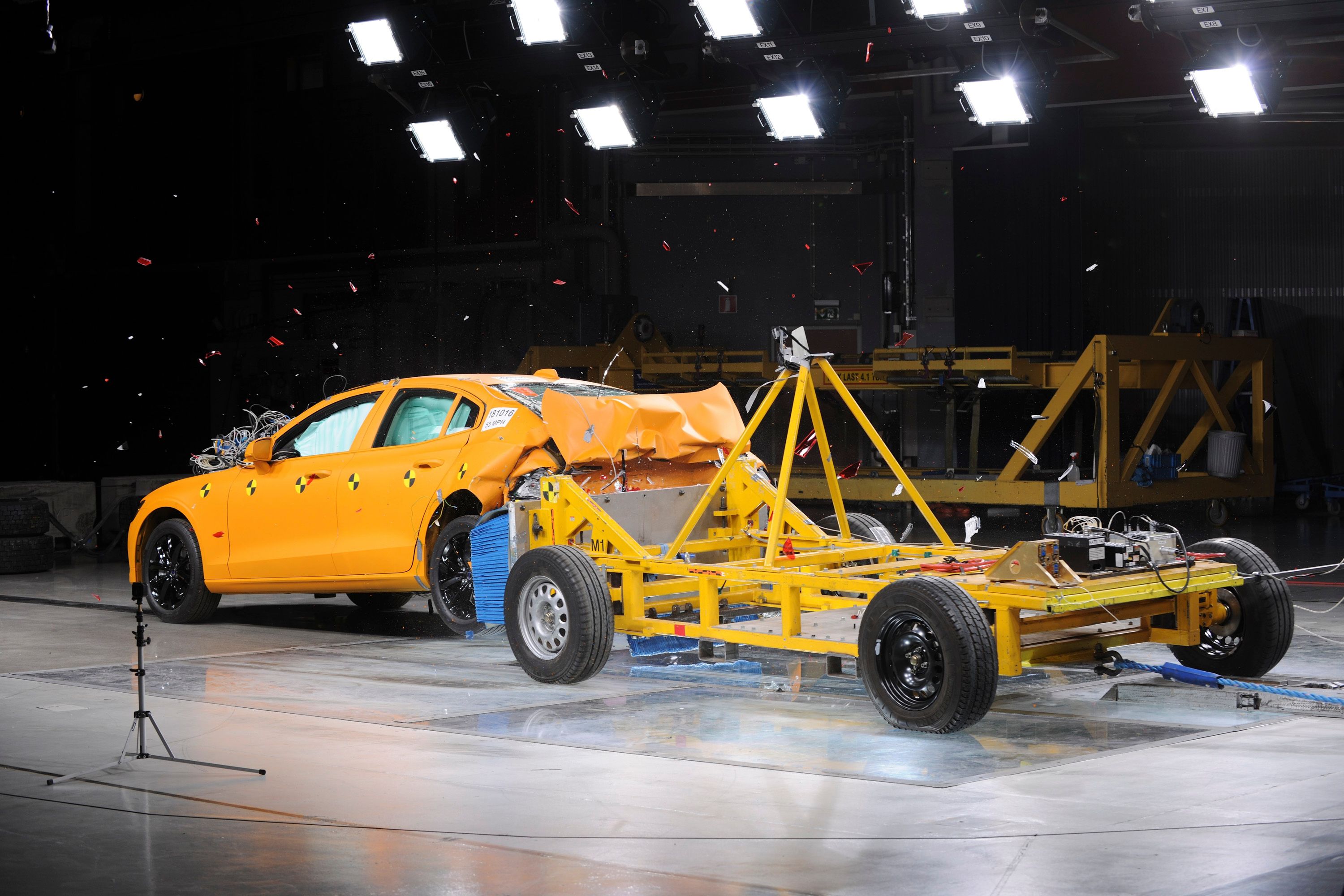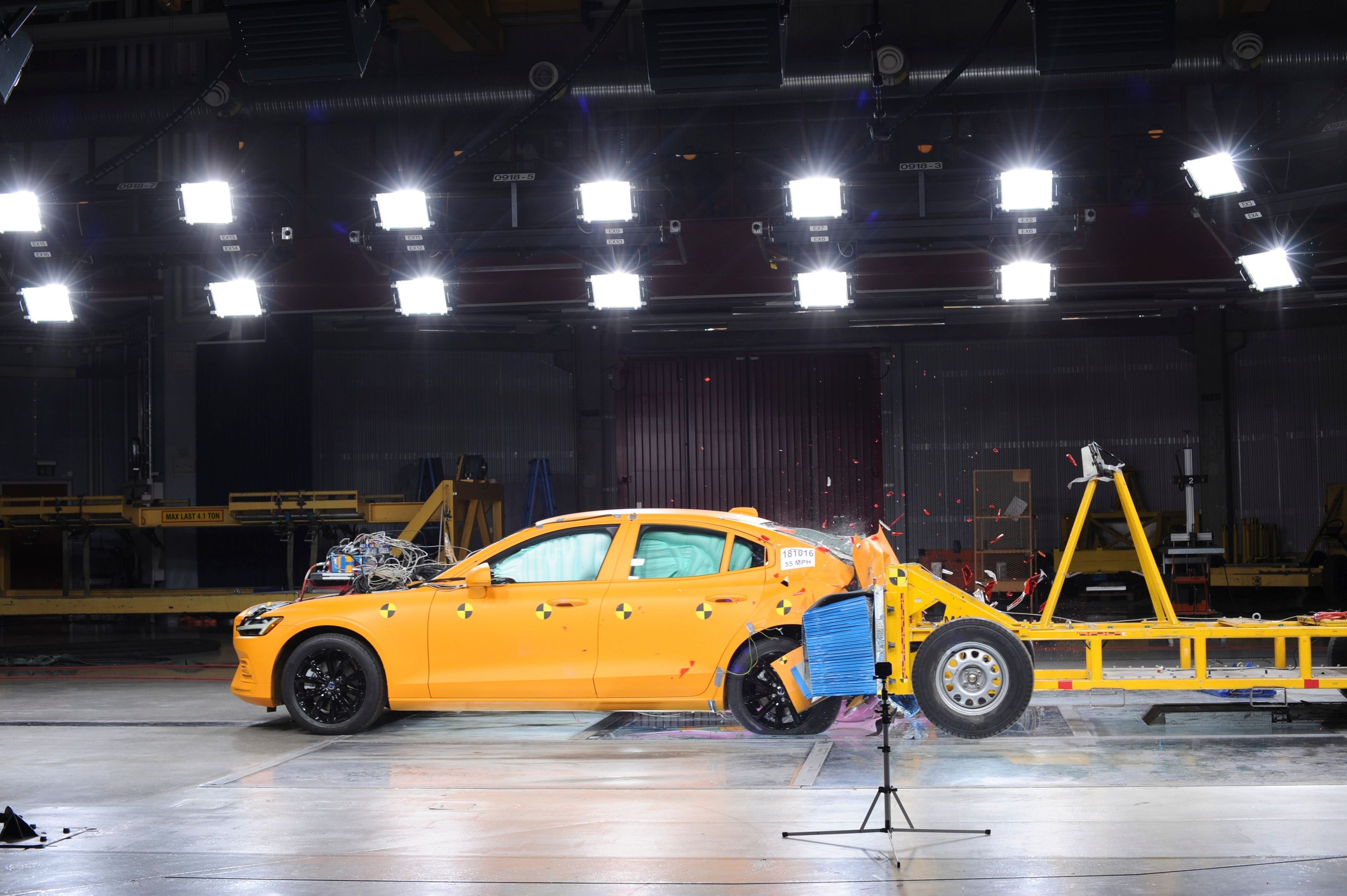As far as declarations of intent go, the one Hakan Samuelsson, Volvo CEO, gave two and a half years ago may be the boldest yet. Commenting on Volvo’s future plans, he presented an interesting vision - “Our Vision is that by 2020, nobody should be seriously injured or killed in a new Volvo car.” This sentence, along with strong investments in research and development, has since become a staple of the company’s dogma. The new Volvo S60, revealed only days ago, follows this dogma to the letter with a wealth of technologies and solutions focused on achieving a single purpose - to create the safest car possible. Sure, the technology hidden under the body of the new S60 is shared among all new Volvo cars based on the SPA platform, but that does not make it any less intriguing.
1 - Ultra-high-strength Boron steel is used for the safety cage
Volvo did not only invest heavily in the development of driving aids and assistant solutions to prevent accidents or mitigate risks, but they also crafted a world-renowned safety cage for all of their cars based on the SPA platform. The most important characteristic of the new safety cage is its extensive use of the so-called "Boron steel." After undergoing a special production process where certain hardening particulars are added, the Boron steel is four times stronger than the average high-strength steel. Previously, Volvo used this type of steel in up to 10 percent of the construction of its cars. Now, with the new generation of cars, the hot-formed Boron steel takes up to 40 percent of the total body weight. When it comes to the S60, Boron steel is accountable for 33 percent of the car's body weight. Considering the fact that the entire safety cage is made of it, it is safe to assume that the Volvo S60 is one of the strongest saloons out there.
We could say that the new Volvo S60 is a peculiar testament to car safety for a number of reasons: it has the strongest type of steel ever used in the automotive industry with crumple zones in the front andrear, as well as passive safety equipment such as the advanced airbag systems. Future car safety improvements are difficult to imagine as Volvo obviously set new standards in this department, as it has so many times before.
2 - City Safety Technology
City Safety is actually a group of different solutions and technologies designed to prevent or forestall accidents in the city or on the open roads. When moving, all the systems of the City Safety Technology package activate above 2.5 mph. Some of the technologies include:
|
System |
Desciption |
|
Autobrake System |
Designed to warn the driver or, in the worst case scenario, activate the automatic braking after detecting pedestrians, cyclists, or large animals. |
|
Oncoming Collision Mitigation |
Designed to avoid or mitigate collisions with oncoming vehicles at intersections. |
|
Steering Support |
Designed to assist drivers during evasive actions in emergency situations by braking the inner wheel, aiding steering, and then braking the outer wheel to help straighten the vehicle. |
|
Large Animal Detection and Evasion System |
Designed to identify and evade large animals if needed |
Obviously, all of these systems represent the next step in vehicle safety and complement Volvo's Vision 2020 plan. Although impressive, Volvo is insistent that the driver bears the ultimate responsibility for driving. So, while these technologies will most certainly help avoid emergency situations and possibly eradicate fatal collisions, the driver is still the one behind the wheel. And, to keep the driver’s awareness at the peak, Volvo created the Driver Alert Control. This technology debuted in 2007, but for the new S60 it uses a camera and various other sensors to asses the driver’s awareness. Should the system detect erratic driving behavior, it will immediately sound an alarm.
3 - Blis With Steer Assist
Blis is short for the Blind Spot Information System and it is designed to detect any traffic approaching from the rear. Yes, it is a Blind Spot detection system similar to those found on numerous other cars. However, not unlike any other mention of Volvo and safety, this system is somewhat different in its execution.
As it turns out, the BLIS sensors can track vehicles up to 230 feet behind the car thus giving the system enough time to warn the driver that a vehicle is approaching. If the driver tries to make a lane change, the light on the door mirror will start to flash. If the driver still does not react, the Volvo S60 will activate the steer assist function and smoothly steer the vehicle back into the lane.
Back when the tech debuted on the Volvo XC60, Malin Ekholm, Senior Director at Volvo Cars’ Safety Centre, said that the Steering Assist and the BLIS are “fully in-line with our strategic approach to develop automotive safety systems based on real-life, real-road safety. Our vision is that no one will be killed or seriously injured in a new Volvo car by the year 2020.”
4 - Oncoming Mitigation by Braking
Oncoming mitigation by braking is another unique Volvo feature. This technology works independently from the City Safety or the Lane Keeping Aid system, and it is focused on reducing the speed of a car when a collision with an oncoming vehicle is inevitable.
Continuously tracking events in front of the car, the oncoming mitigation by braking can actually engage the brakes and slow the vehicle down by 6.2 mph. Lower speed equals lower possibility of injuries. Apart from detecting front-to-front collision, the system can activate pre-crash safety protocols such as the belt-tensioners which prepare the occupants for the collision. As soon as this system detects an impending collision, the driver will be alerted in the form of warning sounds or warning signs on the displays.
5 - Connected Safety
Connected Safety probably has the largest development potential. It is a cloud system which collects information from all connected Volvo and Volvo Trucks vehicles on the roads. Combining data from multiple sources gives the drivers an important edge when it comes to car safety. For now, the technology can report on slippery road conditions or activated hazard lights giving the drivers enough time to adapt their driving style or to prepare for the events ahead.
Obviously, this sounds a lot like the Internet of Things, but real-world applications could be incredibile. Volvo Cars and Volvo Trucks partnered up in order to populate the system and create a critical mass of vehicles needed for the system to work.
In reality, the Connected Safety works something like this: as soon as a car or a truck turns on the hazard lights, an alert is sent to all connected nearby vehicles, informing the drivers about a possible accident in the vicinity. The system, apparently, works in total anonymity.
Further reading
|
|
link=art181463> |
Read our full review on the 2019 Volvo S60.
|
|
link=art145184> |
Read our full review on the 2017 Volvo S60.
|
|
link=mot188> |
Read more Volvo news.





